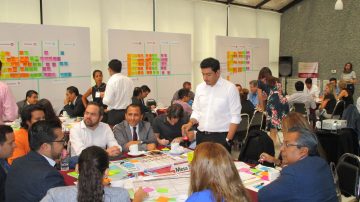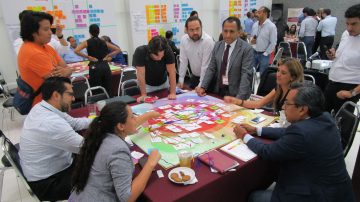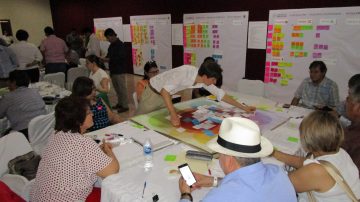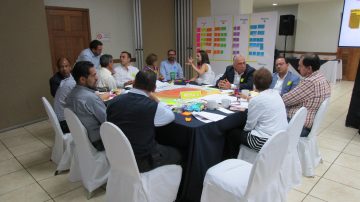More than 400 people from all sectors involved in mobility within the 32 states worked on the draft of normative and public policy proposals to improve mobility in Mexico with perspectives of climate change and human rights.
When speaking about “regulation” and “normativity” in relation to mobility, one usually thinks about conflicts between taxi services and digital platforms, about the reorganization of public transport concessions or the regulation of new mobility services such as electric scooters. In Mexico, states are the ones that have more attributions in these matters — although the reality is complex and requires the participation of cities, users, private sector, and other stakeholders in decision making. In recent years, the creation of Mobility Laws in some states has advanced the discourse and has managed to integrate concepts of sustainability and equity.However, many legislative initiatives have been motivated solely by particular phenomena such as those mentioned above. In a few cases, the full legal potential has been exploited to improve mobility in all its dimensions for Mexicans, strengthening good management of the sector among the different actors involved and affected.
Considering the express request of ten state congresses and the pressing realities in the matter of mobility in the states, the federal government through the Ministry of the Interior (SEGOB), the Ministry of Agrarian, Territorial and Urban Development (SEDATU) and the Ministry of Environment and Natural Resources (SEMARNAT), with the support of the Deutsche Gesellschaft für Internationale Zusammenarbeit (GIZ) GmbH (German Cooperation for Sustainable Development), through the Mexican-German Climate Change Alliance and the Cities & Climate Change Program (CiClim) carried out the coordination and implementation of the National Process of Regulatory Harmonization in Mobility.
The process is based on the observance of human rights, and hence mobility is understood as a phenomenon centered on the person, his/her movements and access to goods and services for the free exercise of his/her rights. In this sense, CiClim seeks to harmonize the regulatory framework with the primary objective of mitigating the impact of mobility on the climate crisis, in accordance with the General Law on Climate Change (LGCC), which, since 2012, recognizes that in order to reduce emissions caused by comprehensive public transport systems, sustainable mobility programs and their strategic link with urban development and territorial planning must be designed and implemented. Similarly, the harmonization process was carried out considering guiding principles such as participation, information, equity and accessibility, among other mainstreaming topics.
As part of the results, seven regional forums were held, consisting of representatives of the executive and legislative branches of all government orders, civil society organizations, academia, private initiative, working people and their trade union groups, among other key actors of the 32 states of Mexico.

Through a participation methodology to co-create the regulatory framework for mobility under the supervision of GIZ, specific needs for efficient and sustainable mobility were recognized in the 32 states. Together, the participants proposed the changes and actions needed to improve standards, public policies, and monitoring and evaluation mechanisms. In this way, it was possible to create networks of mobility among the states. The participants noticed the similarities between their problems and the potential of their solutions beyond their borders. Similarly, the reality of mobility between its various territories was recognized and participants from various sectors agreed upon proposals for improvement in metropolitan and interstate coordination.

The regulatory map resulting from the work tables gives the Process the ability to start from the reality of the mobility phenomenon and compare it with the congruence of its reflection on the regulatory framework. The Government of Mexico is expected to issue its recommendations in the form of a model regulatory framework for mobility in the last quarter of 2019, accompanied by a use and implementation guideline. Local congresses may discuss them, adapt them to their diverse realities and, where appropriate, adopt or reform laws on the matter through their legislative process.

The National Process puts into action the Sustainable Development Goals (SDG) of the 2030 Agenda in Mexico. This process serves especially as a tool for the implementation of the goals numbers 11 “Make cities and human settlements inclusive, safe, resilient and sustainable” and 13 “Take urgent action to combat climate change and its impacts”. Together with all interested parties and sectors, the Process has the potential to create the legal tools necessary to transform mobility in Mexico. It is expected that in subsequent phases and in compliance with their obligations, the authorities of the three government branches have succeeded in creating or adapting, “harmonizing,” all legal and regulatory provisions for sustainable mobility.

File for consultation:
